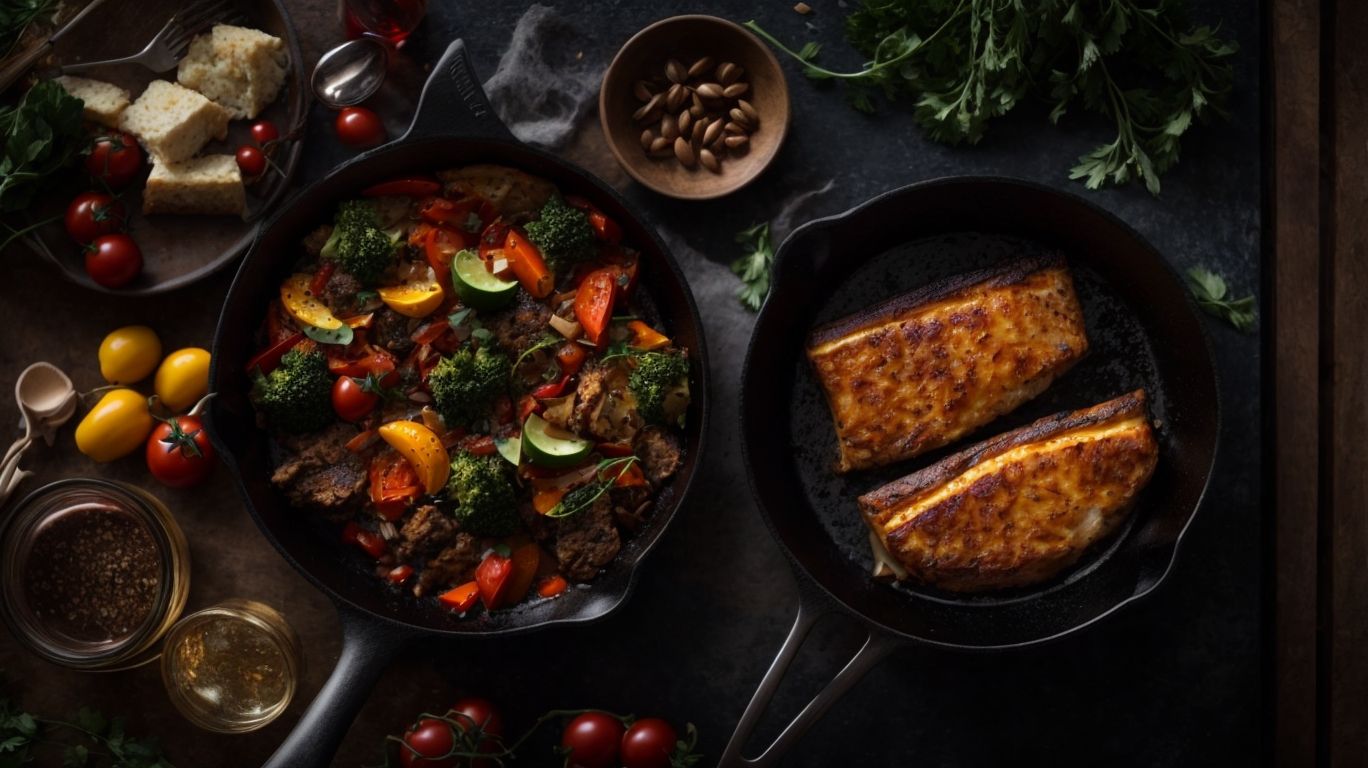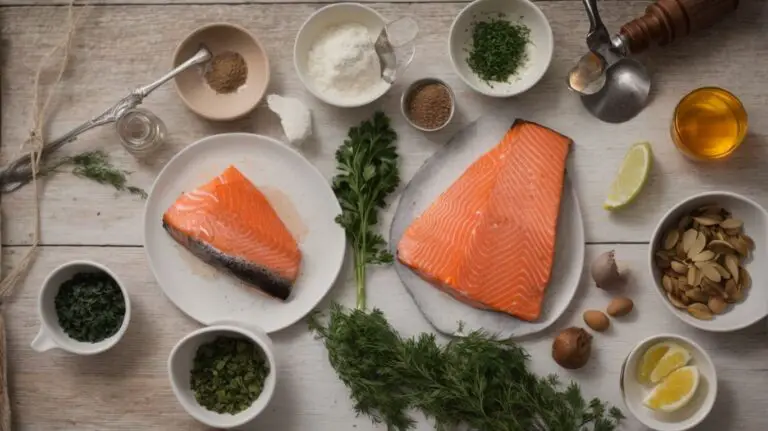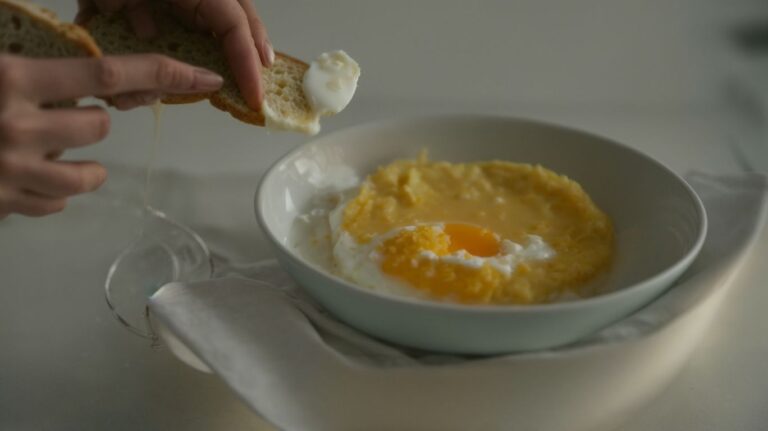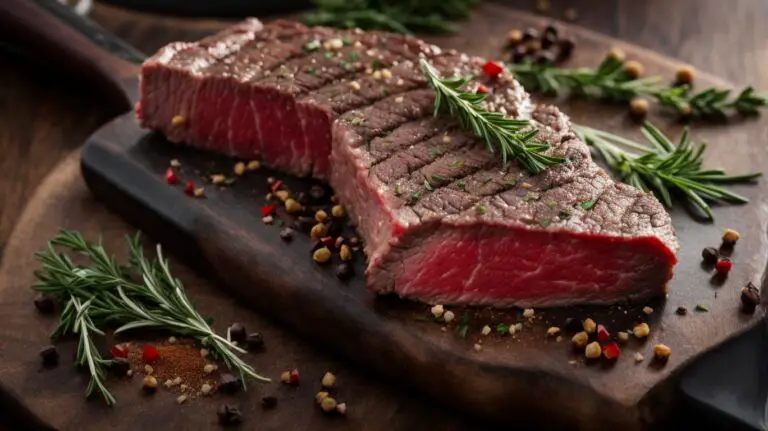How to Cook in Cast Iron Without Sticking?
Are you looking to master the art of cooking with cast iron cookware? Look no further!
This article will explore everything you need to know about using and caring for your cast iron pans. From seasoning your cookware to tips for cooking without sticking, we’ve got you covered.
Join me, Chris Poormet, culinary blogger of the year, as we dive into the world of cast iron cooking and learn how to make the most of these versatile kitchen tools.
Key Takeaways:
What is Cast Iron Cookware?
Cast iron cookware is a type of kitchen utensil made of cast iron, renowned for its durability and heat retention properties.
One major benefit of using cast iron cookware is its versatility – it can seamlessly transition from stovetop to oven, making it perfect for dishes that require both cooking methods. Additionally, seasoning a cast iron skillet creates a natural non-stick surface, ideal for cooking delicate foods like eggs and fish without the need for excess oil. Pan scrapers are essential tools for maintaining cast iron, as they help remove food residue without damaging the seasoned coating. Common uses of cast iron cookware include searing meats, frying, baking, and even slow cooking stews and soups.
Why is Cast Iron a Popular Choice for Cooking?
Cast iron is a popular choice for cooking due to its versatility, even heat distribution, and ability to create a natural non-stick surface over time.
Skillets and pans made from cast iron are highly durable and can withstand high cooking temperatures, making them perfect for searing, frying, and baking.
Unlike other materials, such as aluminum or stainless steel, cast iron retains heat well and distributes it evenly across the cooking surface, ensuring that food is cooked thoroughly and consistently.
Another advantage of cast iron cookware is its versatility – it can be used on the stovetop, in the oven, or even over an open flame.
When properly seasoned and maintained with a thin layer of cooking oil, cast iron develops a natural non-stick surface that improves with each use.
The rustic appearance of cast iron adds a touch of charm to any kitchen, and its ability to last for generations makes it a popular choice among home cooks and professional chefs alike.
Seasoning Your Cast Iron Cookware
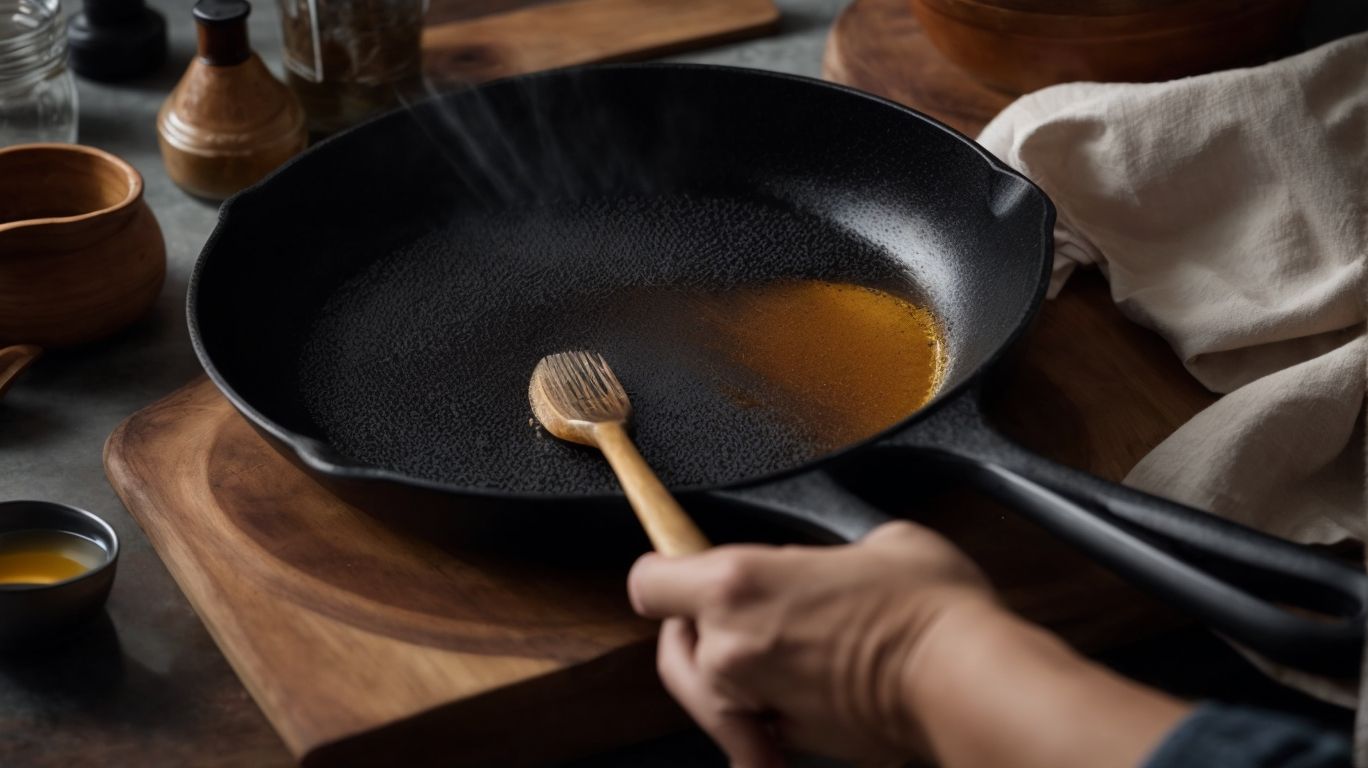
Credits: Poormet.Com – Mark Lee
Seasoning your cast iron cookware is essential to maintain its non-stick properties and prevent rusting, creating a protective layer that enhances cooking performance and longevity.
What is Seasoning and Why is it Important?
Seasoning is the process of coating cast iron cookware with oil and heating it to create a polymerized layer that prevents food from sticking and protects the metal from rust.
Seasoning not only acts as a barrier between the food and the iron surface, but it also imparts a rich flavor to your dishes over time. When vegetable oil is heated during the seasoning process, it undergoes a chemical transformation, forming a durable coating that continuously improves with use.
How to Season Your Cast Iron Cookware?
To season your cast iron cookware, apply a thin layer of oil, such as vegetable or canola oil, to the surface, then bake it in the oven at a high temperature to create a protective coating.
When selecting an oil for seasoning, it’s essential to choose one with a high smoke point, such as grapeseed oil, which is known for its ability to withstand high temperatures without breaking down.
Once the oil is applied, place the cookware upside-down in the oven to allow any excess oil to drip off and ensure an even coating.
During the baking process, the oil undergoes a chemical reaction that creates a polymerized layer on the surface, enhancing the cookware’s non-stick properties.
Tips for Cooking in Cast Iron
Cooking in cast iron requires some tips and tricks to ensure optimal results, from preheating the skillet to choosing the right cooking oil and maintaining the ideal cooking temperature.
Preheating Your Cast Iron
Preheating your cast iron skillet is crucial to ensure even cooking and prevent food from sticking to the surface.
The process of preheating a cast iron skillet involves allowing the skillet to gradually reach high temperatures before adding any ingredients. This not only helps in creating a non-stick surface naturally but also ensures that heat is evenly distributed throughout the pan, leading to perfectly cooked meals every time. One recommended technique is to preheat the skillet over low to medium heat for a few minutes before turning up the heat to the desired temperature. By preheating your skillet, you can also enhance the flavor of your dishes and achieve a beautifully seared exterior on meats.
Using the Right Cooking Oil
Choosing the right cooking oil for cast iron is essential to prevent sticking and achieve optimal cooking results.
When seasoning your skillet, the type of oil you use plays a crucial role in creating that perfect, non-stick surface. Neutral oils like grapeseed or canola are excellent choices due to their high smoke points and mild flavors. These oils help in forming a protective layer on the skillet, reducing the chances of food getting stuck during cooking.
Properly oiled cast iron cookware is easier to clean and maintain, preserving its seasoning for long-lasting performance. It’s important to avoid oils with low smoke points, such as olive oil, which can lead to a sticky residue on your skillet.
Avoiding Acidic Foods
It is advisable to avoid cooking acidic foods in cast iron as they can react with the metal and compromise the seasoning.
When acidic foods such as tomatoes, vinegar, or citrus come in contact with cast iron, they can cause the metal to leach into the food, altering the flavor and potentially staining the cookware. These reactions can also lead to rust formation if the protective seasoning of the pan is compromised.
To prevent this, consider using alternative cookware materials like stainless steel, enamel-coated cast iron, or aluminum pots and pans for acidic dishes. These options provide a non-reactive surface for cooking acidic foods without compromising the integrity of your cookware.
Cooking at the Right Temperature
Cooking at the right temperature in cast iron ensures proper browning and flavor development while minimizing the risk of food sticking to the surface.
One key aspect of achieving the perfect temperature when using a cast iron skillet is preheating it properly – a step often overlooked but crucial for even heat distribution.
By allowing the skillet to heat up gradually, the entire surface becomes adequately hot, creating a suitable environment for searing meats or sautéing vegetables.
Maintaining a consistent temperature throughout the cooking process is essential for optimal results. Adjusting the heat source as needed and monitoring the skillet’s temperature ensures that your dish cooks evenly and doesn’t burn.
How to Prevent Sticking When Cooking in Cast Iron?
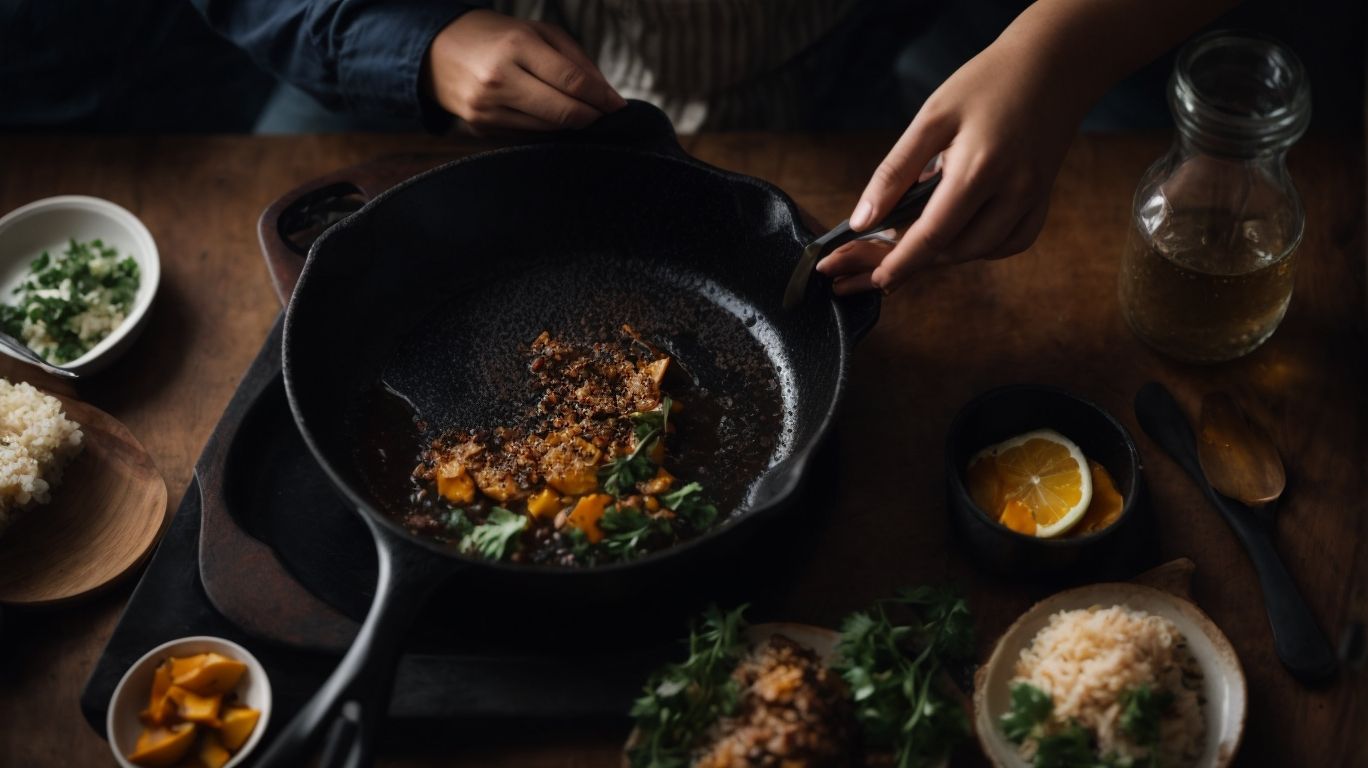
Credits: Poormet.Com – Jeffrey Lewis
Preventing sticking when cooking in cast iron involves proper food preparation, adequate use of cooking oil, avoiding pan overcrowding, and employing suitable cooking techniques.
Properly Preparing Your Food
Properly preparing your food by drying it thoroughly and seasoning it can help prevent sticking in cast iron cookware.
When using a skillet, ensuring that the surface is properly seasoned is crucial to create a natural non-stick coating that will aid in the cooking process. Seasoning involves applying a thin layer of oil and heating it until it polymerizes, forming a protective barrier against the food. This barrier not only prevents sticking but also helps in flavor retention and even heating.
- One effective way to avoid sticking is by heating the skillet adequately before adding the food. This allows the heat to be evenly distributed, reducing the chances of the food sticking to the surface.
- After cooking, make sure to clean the skillet properly to remove any residue that may cause sticking during the next use.
Using Enough Cooking Oil
Ensuring you use enough cooking oil when cooking in cast iron can create a protective barrier that reduces the risk of food sticking to the pan.
Properly coating the surface of the skillet with oil before cooking also helps in conducting heat evenly across the pan, resulting in better-cooked dishes. To achieve this, you can use a paper towel to spread a thin layer of oil, ensuring it covers all the nooks and crannies of the pan. Letting the oil heat up before adding ingredients can further enhance the non-stick properties of the cast iron skillet.
Not Overcrowding the Pan
Avoiding overcrowding the pan when cooking in cast iron allows for proper heat circulation and ensures even cooking without food sticking together.
Overcrowding a skillet can lead to a myriad of issues, such as steaming rather than searing meats, resulting in a lack of desired browning and flavor development. With too many ingredients packed into the pan, the temperature may drop significantly, causing food to cook unevenly. To combat these negative effects, it’s advisable to use a larger skillet or cook in batches.
By allowing adequate space between pieces of food, you’ll achieve that coveted golden crust on your steaks or veggies. Overcrowding can lead to excessive moisture buildup, increasing the likelihood of the pan developing rust. To prevent this, ensure proper drying and seasoning of your cast iron skillet after each use.
Using the Right Cooking Techniques
Employing the right cooking techniques, such as searing or flipping at the right time, can prevent food from sticking in cast iron cookware.
When cooking pancakes in a skillet, ensuring that the pan is properly preheated before adding the batter is crucial to minimize sticking. Use a small amount of oil or butter to coat the skillet evenly before pouring the pancake batter.
Controlling the temperature is key; too high can lead to burning while too low may cause sticking. As the pancake cooks, wait for the edges to set before flipping. This technique helps in achieving a nicely browned exterior without leaving residues on the skillet.
Cleaning and Maintaining Your Cast Iron Cookware
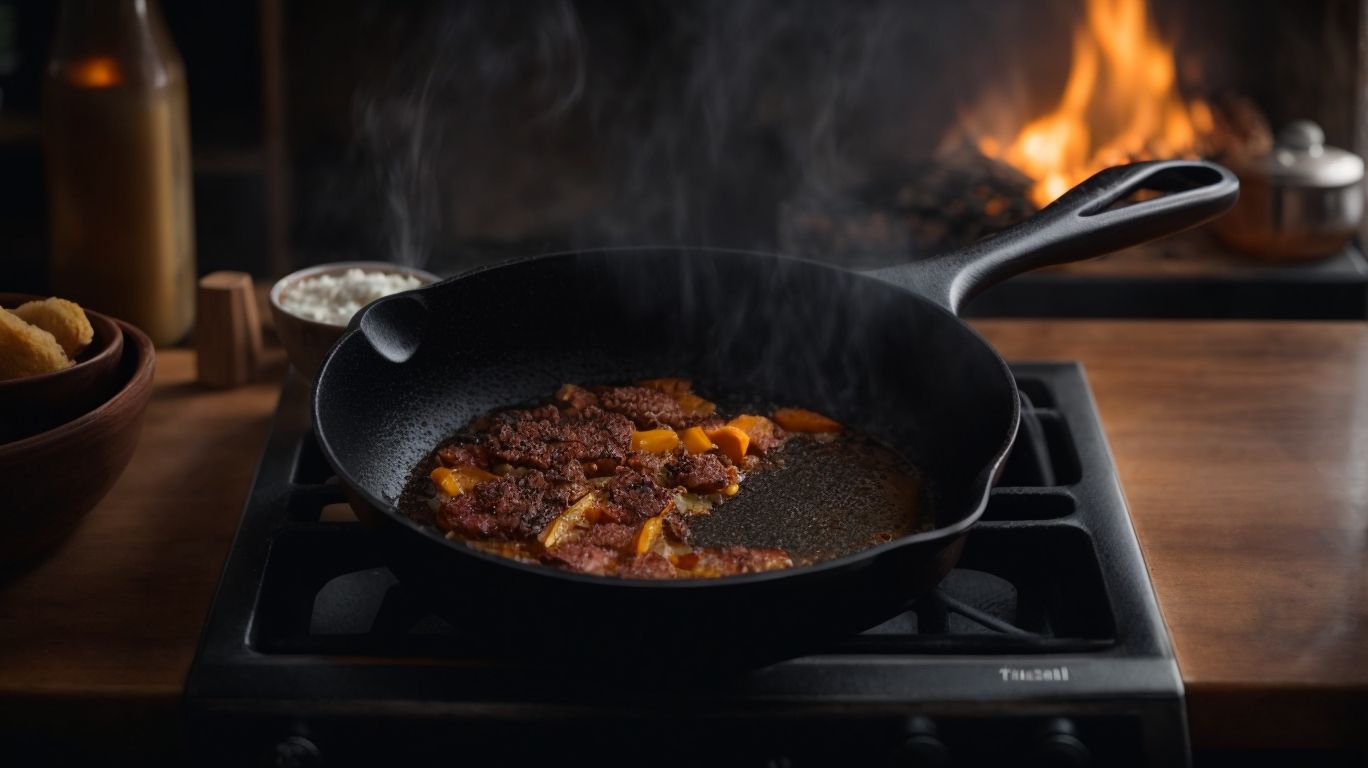
Credits: Poormet.Com – Alan Martin
Cleaning and maintaining your cast iron cookware is essential to preserve its quality and prevent issues such as rust or sticking food residues.
How to Clean Your Cast Iron Cookware?
Cleaning your cast iron cookware involves gentle scrubbing with a pan scraper or steel wool, followed by thorough drying and re-seasoning to maintain its integrity.
When removing stubborn residue or rust from your cast iron cookware, it’s important to avoid using soap as it can strip off the seasoning. Instead, create a paste using a mixture of coarse salt and water to gently scrub the surface. Rinse the pan thoroughly and dry it completely to prevent any potential rust formation.
For regular cleaning, use a soft sponge or brush with hot water to scrub off any food particles, then dry the cookware thoroughly. After cleaning, apply a thin layer of vegetable oil or shortening to the pan to maintain its seasoning and prevent rust.
Properly Storing Your Cast Iron Cookware
Properly storing your cast iron cookware involves ensuring it is completely dry, seasoned, and stored in a dry environment to prevent rust and maintain its seasoning.
Avoid storing your cast iron cookware directly on top of each other to prevent scratching the seasoning; instead, place a layer of paper towel between each piece. When choosing a storage location, opt for a well-ventilated area near a window. Ensure the area is free from moisture and excess humidity, as these can lead to rust. Be mindful of the smoke point of oils you use for seasoning, as oils with higher smoke points create a more durable seasoning.
How to Restore a Rusty Cast Iron Pan?
Restoring a rusty cast iron pan involves scrubbing off the rust with a steel wool or chain-mail scrubber, re-seasoning the pan, and storing it properly to prevent further rusting.
To begin the restoration process, start by washing the pan with warm water and a mild dish soap to remove any surface dirt. Next, use a pan scraper or a plastic scrub brush to gently loosen and remove the black residue. Once the loose rust is removed, use a steel wool or a chain-mail scrubber to scrub off the remaining rust. This may require some serious elbow grease, but the results are worth it. After all the rust is removed, thoroughly dry the pan with a clean cloth or paper towel.
Frequently Asked Questions
Can I cook acidic foods in a cast iron skillet without sticking?
Yes, you can! Cast iron skillets are known for their versatility and ability to withstand high heat, making them perfect for cooking acidic foods like tomatoes and citrus fruits without sticking.
How do I season my cast iron skillet to prevent sticking?
The key to preventing sticking in a cast iron skillet is proper seasoning. To do this, coat the skillet with a thin layer of oil and then bake it in the oven at 350 degrees Fahrenheit for one hour. Repeat this process every few months to maintain a non-stick surface.
What types of oil should I use when cooking in cast iron to prevent sticking?
It’s best to use oils with a high smoke point, such as canola or vegetable oil, when cooking in cast iron. These oils can withstand high heat without burning and creating a sticky residue on the skillet.
How can I tell if my cast iron skillet is hot enough to cook without sticking?
A simple way to test if your cast iron skillet is hot enough is to sprinkle a few drops of water onto the surface. If the water sizzles and evaporates immediately, the skillet is hot enough to cook with.
Is it necessary to preheat my cast iron skillet before cooking?
Yes, preheating your cast iron skillet is crucial to preventing sticking. This allows the skillet to reach an even and consistent temperature, creating a non-stick surface for your food to cook on.
Can I use metal utensils when cooking in a cast iron skillet without sticking?
Yes, you can use metal utensils in your cast iron skillet without worrying about damaging the surface. Cast iron is durable and can withstand the use of metal utensils, unlike non-stick pans which can easily scratch.

